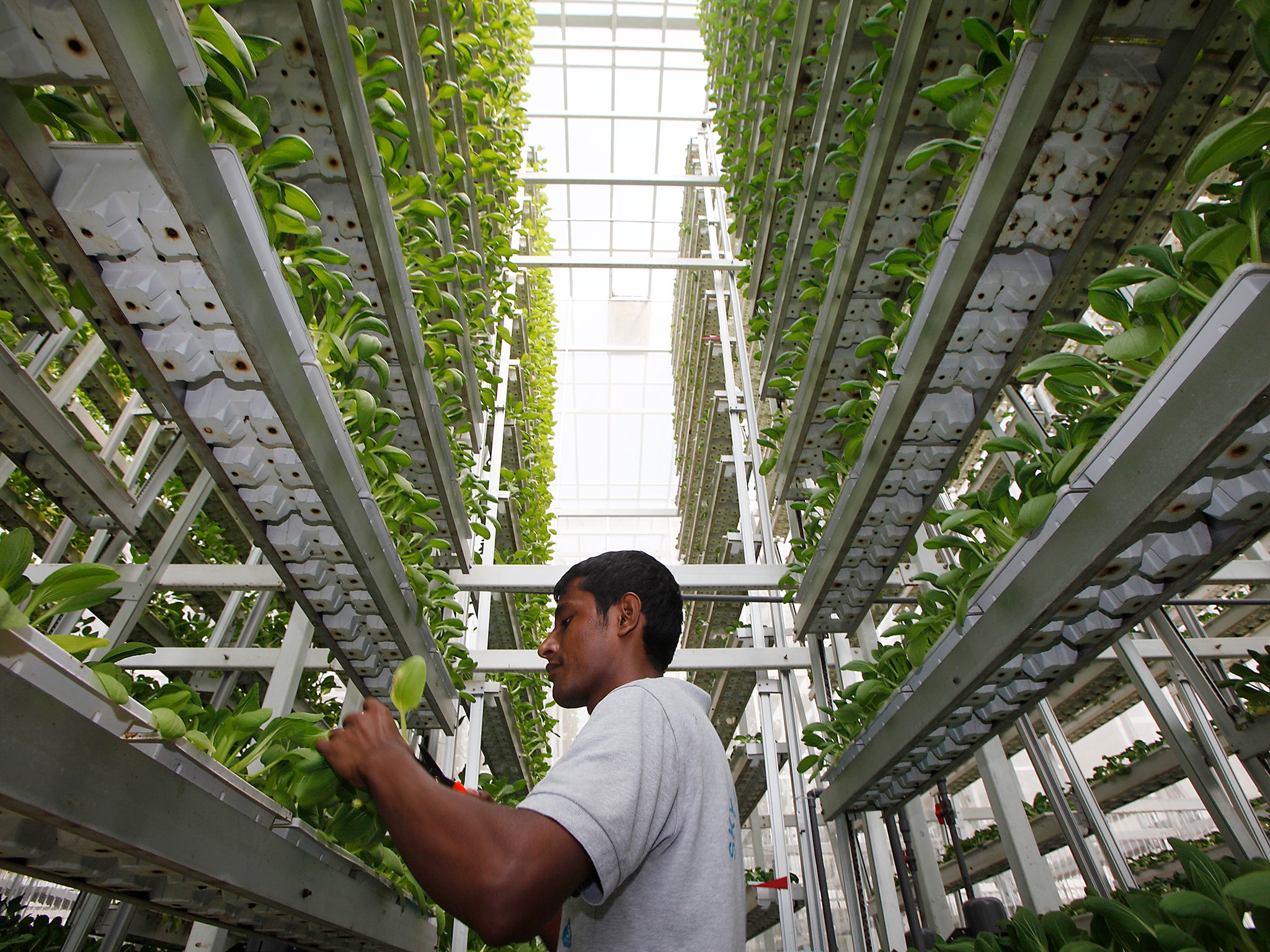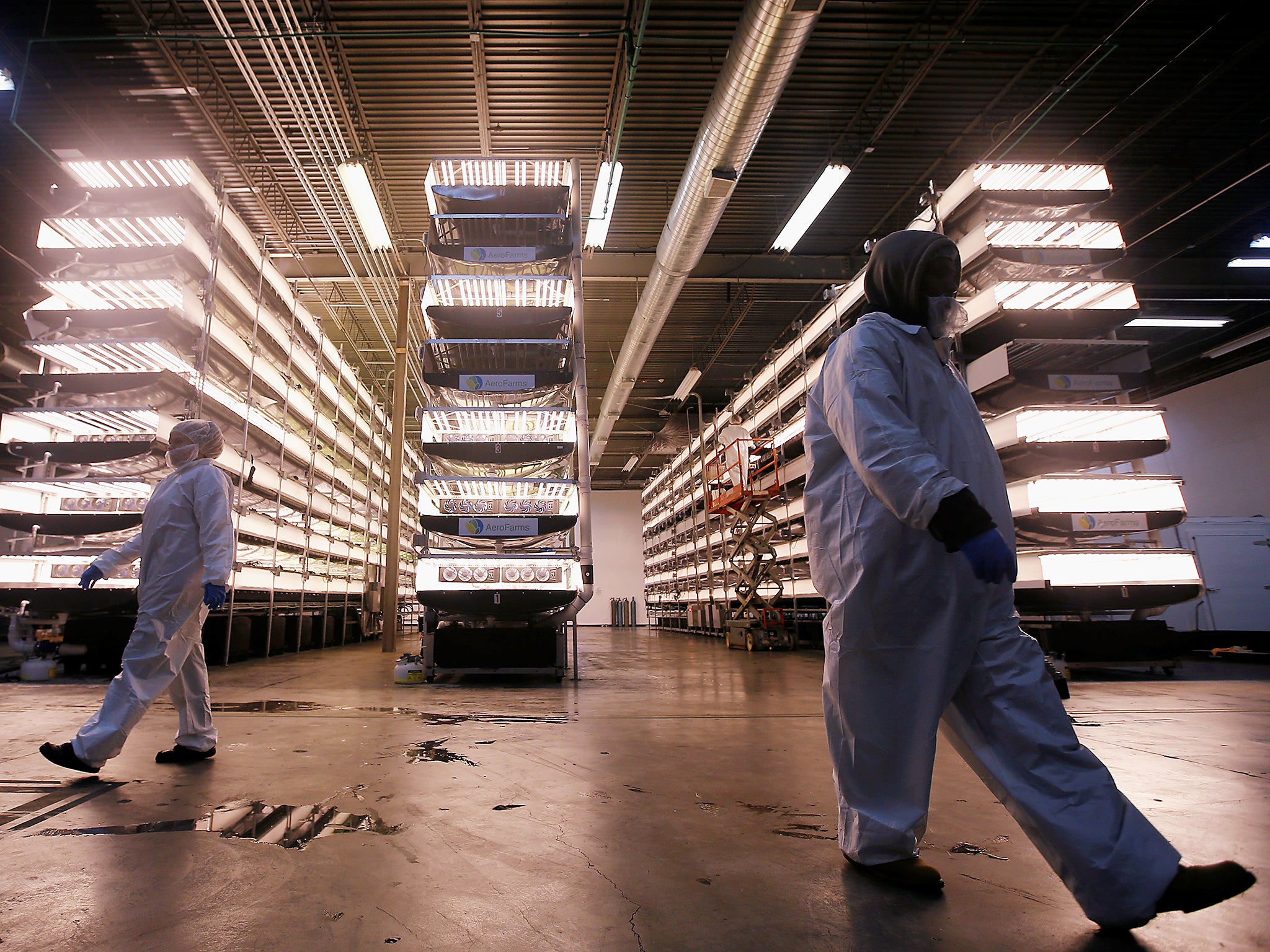The Independent's journalism is supported by our readers. When you purchase through links on our site, we may earn commission.
Vertical farming: Is this the answer to the world’s food shortage?
Science stacks up in favour of high-rise farms as a sustainable food source – essential as the world’s population rockets

Your support helps us to tell the story
This election is still a dead heat, according to most polls. In a fight with such wafer-thin margins, we need reporters on the ground talking to the people Trump and Harris are courting. Your support allows us to keep sending journalists to the story.
The Independent is trusted by 27 million Americans from across the entire political spectrum every month. Unlike many other quality news outlets, we choose not to lock you out of our reporting and analysis with paywalls. But quality journalism must still be paid for.
Help us keep bring these critical stories to light. Your support makes all the difference.
At the turn of the millennium, a professor of environmental science at Columbia University in New York took a detour from the curriculum. He asked students what the world would be like in 2050. Dickson D Despommier’s class estimated its population would swell to nine billion people making food production a huge issue.
One solution they considered was to grow crops on every rooftop in New York City. After a lengthy process of studying aerial maps and working out which crops were most efficient, students judged rooftop gardens could feed only about 2 per cent of the 2050 population of New York. “They were terribly disappointed,” Despommier told The New Yorker.
But he got thinking: what if you could stack crops on top of one another like shelves in the fridge, or the floors of a building? The following year he coined the term “vertical farming”. But it would take several years for light technology to make these vertical farms possible.
With scientists having worked out how to manipulate the light spectrum to help plants grow, hundreds of vertical farms have cropped up in Asia and several large farms have been established in the US. Now vertical farming is coming to the UK. Supporters say it will address food supply issues as the world’s population becomes increasingly urban.
“Vertical farming has been born out of the challenges facing modern society,” says Henry Aykroyd, chief executive of Intelligent Growth Solutions, a company building a £2.5m vertical farm at the James Hutton Institute in Invergowrie near Dundee. As the city-dwelling population of the world increases to more than 70 per cent by 2050, people will find themselves further than ever from the places where cattle grazes and food is grown.

A new solution is needed to keep up with year-round demand for everything from humble salad leaves to exotic produce like pineapples and avocados. According to Aykroyd, that solution is vertical farming.
Phillip Davis, a scientist from Stockbridge Technology Centre, has been helping the first vertical farms in the UK get off the ground. “The science behind it has been going on since Darwin was doing light measurements but it’s only in the last five or six years that the LEDs are bright enough to grow plants,” he said.
In the millions of years that plants have grown under sunlight, they’ve learned to sense different qualities of light to turn into energy using photoreceptors as their “eyes”. These photoreceptors only “see” blue or red light. It’s now possible to make LEDs that emit the blue and red light the plants need, excluding other parts of the spectrum. “By changing the light quality we can change the way the plant grows,” Dr Davis explained. “You can change how tall it grows, how fast it grows and when it flowers using spectrums of light.”

These LEDs make it possible to grow salad and other crops that have a short shelf life in places where there is little space and no natural light. Tom Webster, a biologist, and his business partner Kate Hofman founded GrowUp Urban Farms in a warehouse with no windows in Beckton, east London. “The idea is to grow food close to where it is consumed, in commercial volumes,” says Webster one weekday afternoon as he inspects a control panel showing the amount of water, waste and light in the growing beds. Behind him pea shoots, watercress and baby kale grow on wide metal trays stacked to the roof.
Each metal tray is lined with a mat made of carpet fibres. The crops are hydrated using water from fish tanks next door, which contains nutrients courtesy of the fish poo. Growers control light and heat to simulate night and day. “Even plants like to rest at night,” says Webster. A white sock, running behind each shelf, blows cooling air over the crops to counter the heat and humidity that gathers above the leaves. The system is between 70 and 90 per cent more water-efficient than traditional agriculture and, because the shelves can be stacked 10 high, it is 10 times more productive per square metre of space.
The whole cycle from seed to harvest takes between seven and 21 days, meaning at least one crop a month, regardless of weather or the season, keeping the shelf price of the salad stable. When the shoots are ready for harvesting, one of the farm’s few employees uses a lift on wheels to go between the beds, cutting the greens so they can be sorted into boxes and moved to a small walk-in fridge. From here the microgreens and herbs are transported to retailers ready for sale. It’s always boxes, never bags, as this helps to prolong the shelf life of the greens.
GrowUp supplies salad, including microgreens and herbs, to organic food retailers. Its microgreens are scattered on plates in restaurants across the capital. Sister community interest company GrowUp Box uses smaller, greenhouse versions of the warehouse ‘aquaponics’ system to teach communities how to grow salads on their own roofs, echoing Despommier’s students, who hoped to feed their city this way.
Join our commenting forum
Join thought-provoking conversations, follow other Independent readers and see their replies
Comments